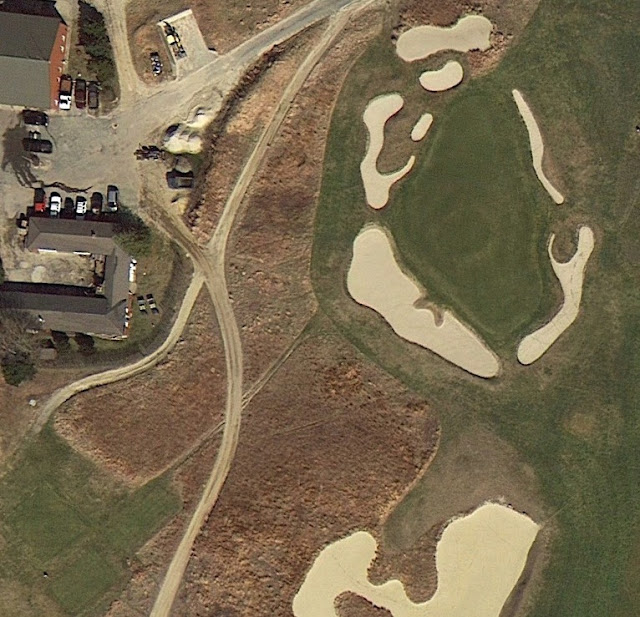One of the victims in the quest to build longer golf courses are short par threes, a staple of the classic school of golf design. This hole type is excellent because it provides a test that is within reach of the vast majority of players. Proper execution is always demanded, as holes of this nature tend to be tightly guarded and/or feature greens that are steeply pitched or segmented thereby making the effective target much smaller. However, without length as an obstacle to scoring, the potential exists for most golfers to score a coveted two while a par is a definite possibility. It is always nice to provide some hope for golfers and give the bogey player a legitimate chance to better the scratch golfer if only for a single hole.
 |
| Distance control is paramount at Shinnecock Hills GC 11th by William Flynn & Howard Toomey. The delicate uphill shot to the green is guarded short by numerous bunkers, but more fearsomely at the back with a sharp fall-off where recovery shots to back-to-front sloped green are brutally difficult. (Photo: Ian Andrew) |
 |
| C.B. Macdonald's 6th hole at National Golf Links of America in Southampton, New York. The green is large and heavily contoured, but the actual target in order to avoid three-putting is much smaller. Note the horseshoe-shaped contour in front-middle of green. (Photo: Google Earth) |
 |
| No. 10 at Kingston Heath GC in Melbourne, Australia. This short par three was inserted into a busy section of the routing by Dan Soutar, and was bunkered heavily by Dr. Alister Mackenzie. |
Short par threes are a valuable tool of the golf architect owing to the limited space they consume. They can be inserted into a routing more easily than other hole types, and can often fit seamlessly into a corner of a tight property. Additionally, because short par threes are within range of the vast majority of golfers, they can cover some awkward terrain or feature that would prove more difficult to cover as any other hole type whose typical tee shots are spread over a larger area. Because of this, the next tee can be located nearer the green, a benefit to walkers and a boon on a tight acreage.
 |
| No. 3 at Wannamoisett CC in Rumford, Rhode Island. Donald Ross fit this short par three into a corner section to maximize his use of the land on a very tight property. Note proximity to second green and fourth tee. (Photo: Google Earth) |
Short par threes play an integral role in testing shot-making ability when confronted on windy days. The ability to keep the ball under the wind is much easier on a longer hole which demands a less lofted club from the tee. The difficulty of a short par three is amplified when only 120 yards needs to be covered into a stiff head or cross wind, requiring the type of feel shot that is lost on many modern players.
 |
| The short 7th at Barnbougle Dunes in Bridport, Australia. Designed by Tom Doak, this short pitch is intimidating in the ever-present winds blowing across the Tasman Sea. |





No comments:
Post a Comment